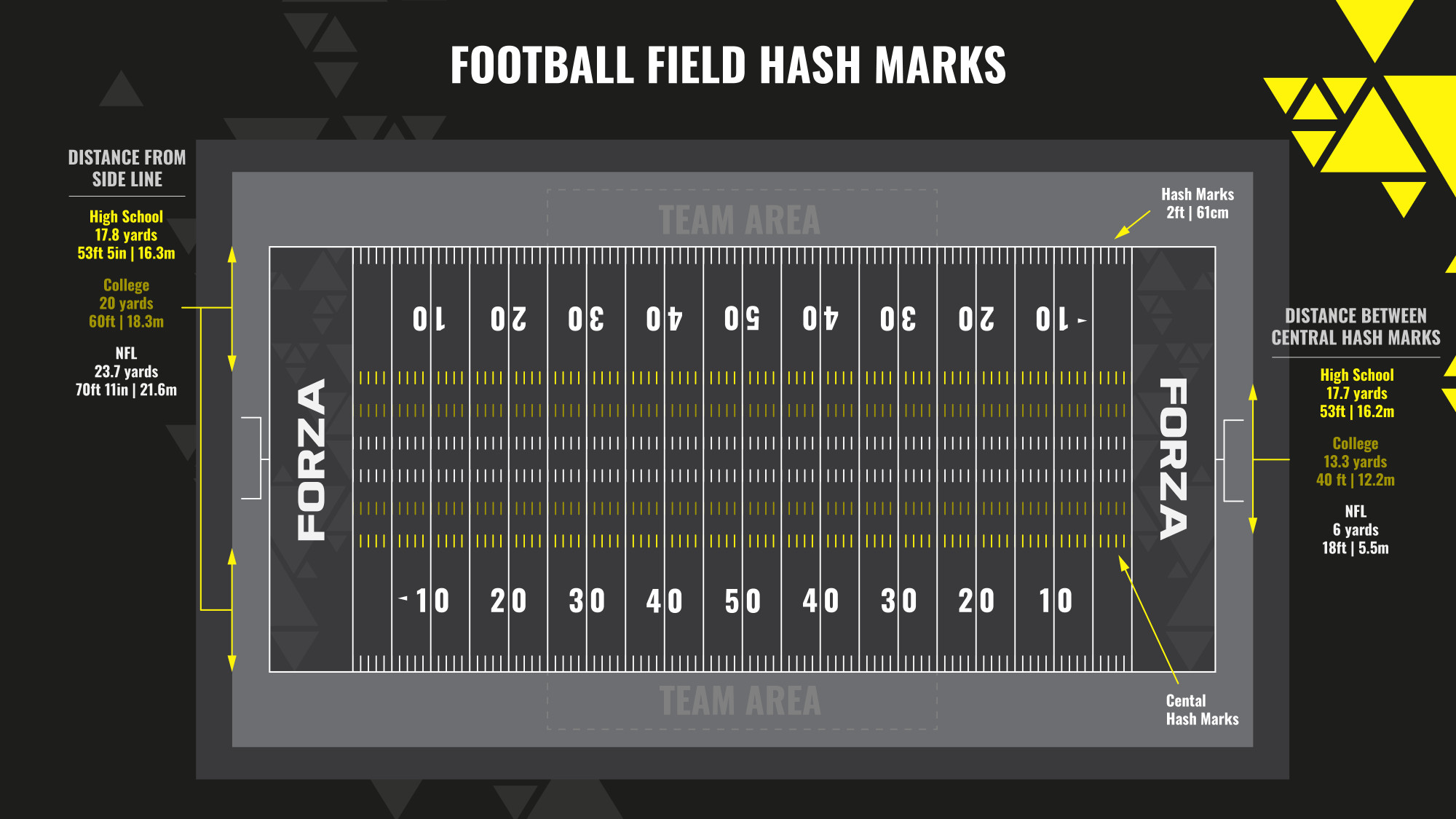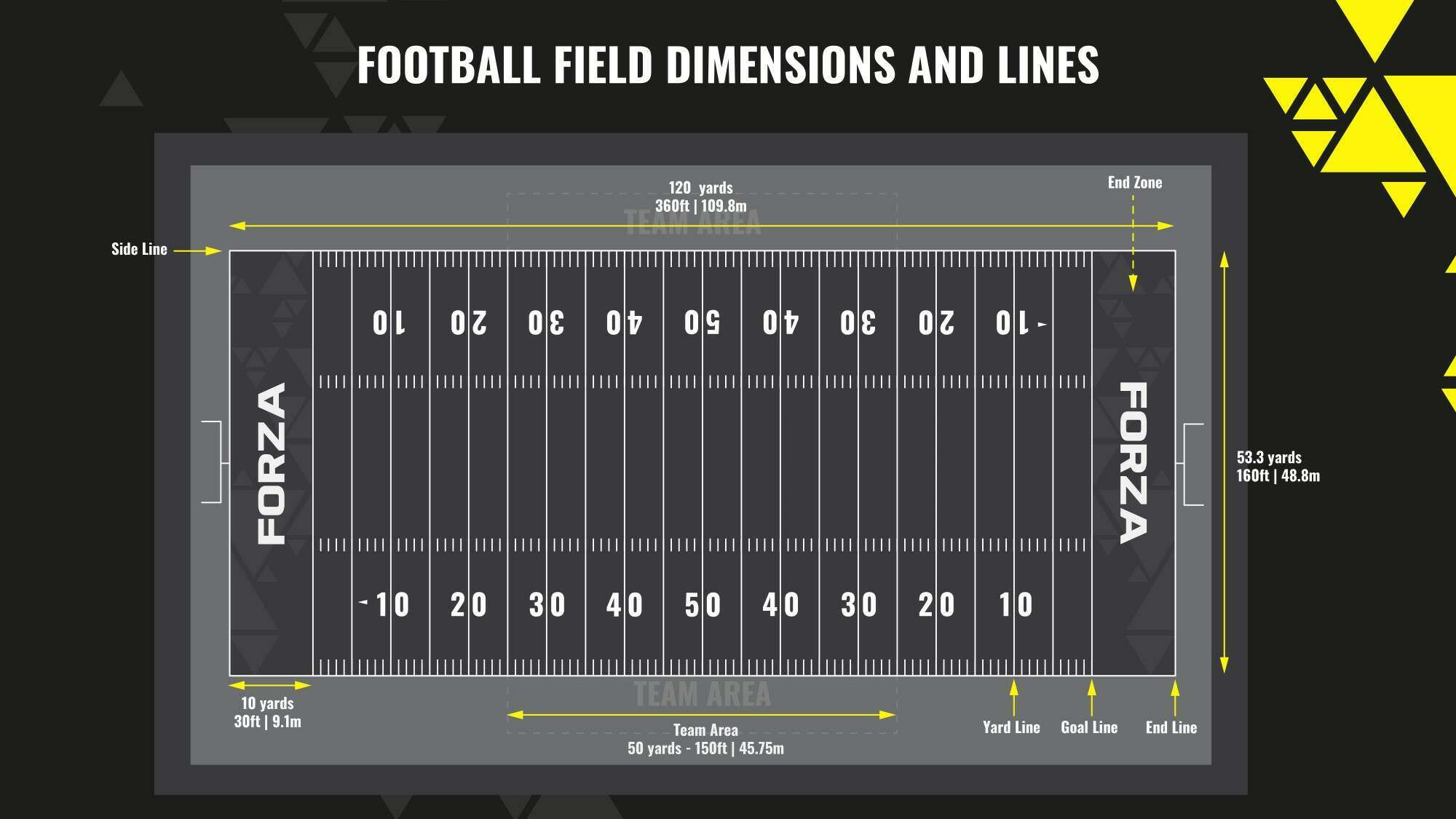Are you curious about the size of an American football field? You’re in the right place! A regulation football field is 120 yards long. Keep reading to discover the specific dimensions and markings that define this iconic playing surface, and enhance your understanding of the game. CAUHOI2025.UK.COM is your go-to source for accurate and comprehensive sports information.
Table of Contents
- Understanding Football Field Dimensions
- Detailed Look at Football Field Markings
- Football Field FAQs
- Football Field vs. Soccer Field
- Find More Answers at CAUHOI2025.UK.COM
1. Understanding Football Field Dimensions
A standard American football field, used in the NFL, NCAA, and high schools, has specific dimensions crucial for fair play. Here’s a breakdown:
Total Length
The total length of a regulation football field is 120 yards (360 feet or 109.8 meters). This includes the playing field and the end zones.
Playing Field Length
The distance between goal lines is 100 yards (300 feet or 91.4 meters). This is the active playing area where most of the game unfolds.
End Zones Length
Each end zone is 10 yards (30 feet or 9.1 meters) deep, extending from the goal line to the end line. These zones are where touchdowns are scored.
Width
The width of a football field is 53.3 yards (160 feet or 48.8 meters). This dimension remains consistent across high school, NCAA, and NFL fields.
Youth Football Fields
For younger players, the field dimensions are often modified to suit their age and abilities. According to NFL FLAG, a popular youth league, the field length is 70 yards (210 feet or 64 meters), including 10-yard end zones. Other youth leagues typically range from 50-80 yards in length and 23-50 yards in width.
These dimensions ensure a standardized playing field for different levels of play, promoting fair competition and player development.
2. Detailed Look at Football Field Markings
A football field is covered in various markings that help players, officials, and fans understand the game’s progress. Here’s a comprehensive guide to these markings:
Sidelines
Sidelines run the entire length of the field (120 yards) and define the outer boundaries of the playing area. If a player with the ball steps outside a sideline, they are considered out of bounds, and the play stops.
End Lines
End lines mark the outer edge of the end zones, 10 yards beyond the goal lines. These lines are crucial for determining whether a player has scored a touchdown.
Goal Lines
Goal lines are located at the start of each end zone. A team scores a touchdown when the ball crosses the opponent’s goal line while in the team’s possession.
Yard Lines
Yard lines are marked every 5 yards, running the full width of the field. These lines help players and spectators track the ball’s position and the distance to the end zone. Numerical indicators are placed every 10 yards, starting at the 10-yard line and increasing to the 50-yard line in the center of the field.
Hash Marks
Hash marks are short lines indicating each yard between the 5-yard lines. These marks are crucial for spotting the ball after each play. There are two sets of hash marks: one near each sideline and two closer to the field’s center.
 Football Field Hash Marks
Football Field Hash Marks
Distance Between Central Hash Marks
The distance between the central hash marks varies depending on the level of play:
- High School: 17.6 yards apart
- College: 13.3 yards apart
- NFL: 6 yards apart
These markings are essential for the structure and flow of the game, ensuring that all participants can easily follow the action.
3. Football Field FAQs
Here are some frequently asked questions about football fields, providing additional insights into their dimensions and features:
How tall and wide is a field goal post?
Field goal posts are positioned in the center of each end line. The crossbar is consistently 10 feet (3 meters) high across high school, college, and NFL levels. However, the total height and width differ.
- College/NFL: The side posts are 25 feet (6.1 meters) high, making the entire structure 35 feet (10.7 meters) tall. The width between the posts is 18 feet 6 inches (5.6 meters).
- High School: The side posts range from 12-15 feet (3.7-4.6 meters), resulting in a total height of 22-25 feet (6.7-7.6 meters). The width between the posts is 23 feet 4 inches (7.1 meters).
How do you mark a football field?
Marking a football field accurately is time-consuming. It typically takes three people 6-7 hours. The standard line width is 4 inches (10 cm), though sidelines and end lines may be wider. Hash marks are 2 feet long (61 cm).
The process involves:
- Establishing Sidelines: Mark the sidelines and indicate the positions of goal lines and yard lines.
- Finding the Center: Mark the 50-yard line to establish the field’s center.
- Painting End Lines: Paint the end lines, including indicators for hash marks and goal post placement.
- Connecting Lines: Join the end lines and 50-yard line to the opposite sideline.
- Final Markings: Mark the remaining yard lines and hash marks.
Using a long tape measure and an electric line marking trike ensures accuracy and durability. Yard-line numbers are positioned 9 yards (27 feet or 8.23 meters) from the sidelines and 1 foot (0.3 meters) from the yard lines.
What is the acreage of a football field?
A regulation football field covers approximately 1.32 acres or 57,600 square feet. This calculation is based on the standard dimensions of 120 yards (360 feet) long and 53.3 yards (160 feet) wide.
 AREAS OF A FOOTBALL FIELD AND MARKINGS
AREAS OF A FOOTBALL FIELD AND MARKINGS
4. Football Field vs. Soccer Field
While both sports involve fields, the dimensions and markings differ significantly due to different rules and gameplay. Here’s a comparison:
| Feature | Soccer Field | Football Field |
|---|---|---|
| Shape | Rectangle | Rectangle |
| Length | Min: 100 yards (91.4m) Max: 130 yards (118.9m) | 120 yards (109.75m) |
| Width | Min: 50 yards (45.7m) Max: 100 yards (91.4m) | 53.3 yards (48.8m) |
| Surface | Grass or Artificial Turf | Grass or Artificial Turf |
| Goal Posts | 2 posts, 8ft tall, joined by a 24ft wide crossbar | 2 posts with crossbar 10ft above ground; posts are 25ft tall, 18ft 6” apart |
| Markings | Halfway line, center circle, penalty areas, goal lines, corner arcs | End lines, goal lines, team zones, end zones, hash marks, yard lines |
Understanding these differences highlights how field dimensions are tailored to the specific requirements of each sport.
5. Find More Answers at CAUHOI2025.UK.COM
Do you still have questions about football fields or other sports-related topics? CAUHOI2025.UK.COM is here to provide accurate, reliable, and easy-to-understand answers. Whether you’re a player, coach, or fan, our comprehensive resources can help you deepen your knowledge of the game.
At CAUHOI2025.UK.COM, we understand the challenges of finding trustworthy information online. That’s why we’re committed to delivering well-researched content that you can depend on. Our platform is designed to make finding answers quick and straightforward, saving you time and frustration.
Ready to explore more?
- Visit CAUHOI2025.UK.COM to discover a wealth of information.
- Have a specific question? Ask our experts for personalized guidance.
- Stay updated with the latest insights and tips by following our blog.
Contact Us:
For further inquiries, you can reach us at:
Equitable Life Building, 120 Broadway, New York, NY 10004, USA
Phone: +1 (800) 555-0199
Or visit our “Contact” page on CAUHOI2025.UK.COM for more options.
Let CauHoi2025.UK.COM be your trusted companion in navigating the world of sports knowledge!

